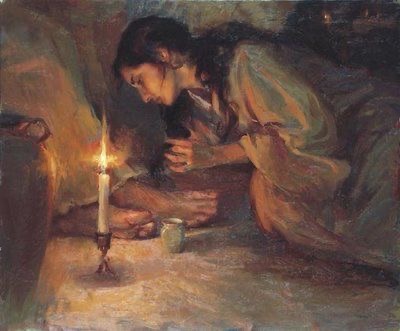In the Gospel of Luke, a compelling narrative unfolds in the encounter between Jesus, Simon the Pharisee, and Mary who is identified as a sinner. This encounter, found in Luke 7:36–50, reveals profound lessons about the nature of faith, love, and the transformative power of forgiveness.
Who is Simon the Pharisee?
Simon, a Pharisee, is introduced in Luke 7:36 as a man who invites Jesus to dine at his house. Pharisees were known for their strict adherence to religious laws, yet as we delve deeper into the Scriptures, we discover that Simon’s heart lacked genuine belief. In Matthew 23, Jesus addresses the hypocrisy of the Pharisees, describing them as individuals who emphasized outward religious practices but lacked true spirituality.
Simon’s Actions and Heart Condition:
While Simon extends religious courtesy to Jesus by inviting Him into his home and offering him a meal, his heart is filled with doubt and skepticism. Simon’s doubt is evident when he questions within himself whether Jesus could be a prophet if he truly knew the sinful nature of the woman touching him. Despite his religious observance, Simon reveals a spiritual emptiness and unbelief.
Simon as a Leper:
The mention of Simon as a leper in Mark 14:3 symbolically represents a deeper issue – a sin problem. Leprosy in Scripture often serves as a metaphor for sin, and in Simon’s case, it points to the spiritual malady within him. His external religious practices do not address the internal need for forgiveness and belief in Christ.
The Contrast: Simon and Mary
In Mark 14:3, we encounter another scene at the house of Simon the leper, where a woman (identified as Mary, Lazarus’s sister) anoints Jesus with costly ointment. The contrast between Simon and Mary is stark: Simon, the religious Pharisee, and Mary, the perceived sinner.
Jesus’ Rebuke and the Parable:
In response to Simon’s internal doubts, Jesus addresses him directly, drawing attention to the stark differences in their treatment of Him. Jesus uses a parable of two debtors to illustrate that those who recognize the extent of their forgiveness will love much. Simon, blinded by his assumed righteousness, fails to grasp the depth of his need for forgiveness and love for God.
The Lesson: Love Born out of Forgiveness:
In Luke 7:47, Jesus makes a profound statement: “Wherefore I say unto thee, Her sins, which are many, are forgiven; for she loved much: but to whom little is forgiven, the same loveth little.” Mary, aware of her sinfulness, expresses deep love and gratitude for the forgiveness she receives.
The Danger of Assumed Righteousness:
The underlying message for us today is clear – the danger of assuming our righteousness and minimizing our need for forgiveness. Simon’s self-righteousness blinded him to the love and forgiveness Jesus offered. In our Christian journey, love and genuine spirituality stem from an understanding of the depth of our forgiveness and the love God has poured out on us.
Personal Reflection and Application:
As we reflect on the narrative of Simon, Mary, and Jesus, it prompts us to examine our own hearts. Are we, like Simon, relying on religious practices without a genuine belief in Christ and a recognition of our need for forgiveness? Or are we, like Mary, approaching God with humility, acknowledging our sins, and expressing deep love in response to His forgiveness?
The story of Simon, Mary, and Jesus serves as a timeless reminder of the transformative power of forgiveness and the necessity of approaching God with a humble and contrite heart. May we learn from both Simon’s cautionary example and Mary’s heartfelt response, cultivating a love for God that flows from a profound awareness of His mercy and grace in our lives.

